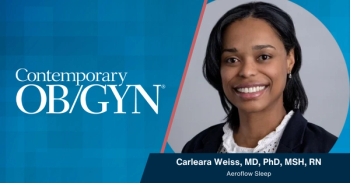
- Vol 64 No 9
- Volume 64
- Issue 9
Has gestational hypertension been banished?
Ob/gyns sometimes need to go beyond guidelines when making judgment calls, as is the case with whether to induce at 37 weeks for gestational hypertension.
The diagnosis of gestational hypertension has been in our obstetric lexicon since at least 1976 when it was described in the
I do not have an earlier version of Williams Obstetrics and if anyone does, please search for gestational hypertension and let me know what you find. But suffice it to say that most currently practicing ob/gyns accept gestational hypertension as a real entity and most would say that a significant proportion of women with gestational hypertension will develop preeclampsia at some time during pregnancy. Furthermore, the prevailing management of gestational hypertension includes ruling out preeclampsia, and if ruled out, outpatient observation with frequent blood pressure checks, visits to the provider office, fetal assessment, and delivery for development of preeclampsia, severe hypertension or by 39 weeks.2 Thus, the management was different for gestational hypertension than for preeclampsia, for which (depending on presence or absence of severe features) delivery was recommended at 34 (with severe features) or 37 weeks (without severe features). By the way, wasn’t it easier to just say (or type) mild preeclampsia rather than preeclampsia without severe features?
However, the American College of Obstetricians and Gynecologists (
What might give us pause, as noted above, the ACOG experts have struggled with this recommendation over the last 6 years, releasing multiple documents with varying guidelines for delivery timing for women with gestational hypertension (Table 1). In 2013 they even had two different recommendations in the same year. Do not be misled by my questioning of ACOG. I am a strong advocate of ACOG’s work and highly grateful for and respectful of the documents released as guidelines to help ob/gyns provide the best care based on ever-changing data.
Sometimes, however, we have to use our own judgment and look a little deeper. In this example of the ACOG 2019 recommendation that women with either gestational hypertension or preeclampsia without severe features be managed exactly the same, suggesting that these are the same disease, I do take issue.4
Let me give you a few important details of the HYPITAT study mentioned above and used as the Level A evidence for this recommendation.
- The diagnosis of gestational hypertension was diastolic blood pressure (DBP) ≥ 95 mmHg on two occasions, which is not a diagnosis that we use;
- The only details about monitoring of the expectant group were “...frequent BP measurements, screening of urine for protein with dipstick or PC ratio” and fetal monitoring that was not clarified with regard to frequency;
- Only 65% of women in both groups had gestational hypertension, the rest had preeclampsia;
- The mean gestational age at randomization was 38 and a half weeks. So at least half of the patients in both groups were at least 38 weeks at time of delivery (not 37 weeks);
- Although the maternal composite outcome was significantly less in the induced group, the only adverse outcome that really occurred in the expectant group was development of severe preeclampsia (36% vs. 23%). No woman developed eclampsia, an abruption or died, and there were no differences in neonatal outcome compared to women who were induced;
- When the women with only gestational hypertension were analyzed, there was no difference in composite outcome between groups (31% vs 38%), while when the women with preeclampsia were analyzed separately, there remained a significant decrease in maternal composite outcome in the women induced compared to those expectantly managed (33% vs. 54%).
There is no doubt in my mind that women who develop gestational hypertension are at high risk of developing preeclampsia and potentially other morbidities associated with preeclampsia. The HYPITAT study tells us that half of the women in the expectant group were induced for severe disease. Further, gestational hypertension is associated with increased maternal and neonatal adverse outcomes compared to those in women who do not develop any hypertensive disease of pregnancy. In a large retrospective study, there was a significant increase in fetal growth restriction, postpartum hemorrhage, and maternal intensive care unit (ICU) admission in women with gestational hypertension compared to women without hypertension.5 So these women deserve very careful evaluation and follow-up, which for most of us would mean at least twice-weekly visits for fetal and maternal assessment, home BP monitoring, and clear instructions for when to come in or to call. And certainly, some of them should be induced at 37 0/7 weeks? Perhaps if we cannot ensure follow-up or if a woman has another morbidity like underlying medical disease or fetal growth restriction. But, what if her baseline BPs all along have been in the 130s/80s and then at her 37-week visit she has a BP of 140/80, which you repeat 4 hours later and find is 138/90. You rule out preeclampsia. Do you tell her she must be induced?
You can tell what I will say: Counsel her, provide excellent instructions for follow-up and a plan for when you would induce her. I say she has gestational hypertension that is not yet preeclampsia. I say this is not the same disease as preeclampsia even if gestational hypertension is on a continuum with a 50% chance of developing preeclampsia. I say ACOG documents are important and useful guidelines, but they are not “the law” (Table 1).4,6,7 I say we are physicians with many years of experience and must use our judgement when making medical recommendations and we must document these discussions and recommendations. What would I do if a woman with gestational hypertension presents at 37 0/7 weeks with a BP of 160/100 and no other sign or symptom of preeclampsia? I would induce. And in between these numbers, what should you do? You know.
I hope that we really haven’t banished the diagnosis of gestational hypertension after all these years and that ACOG keeps providing guidelines and we keep using our judgement to provide the best care we can for women.
Disclosures:
The author reports no potential conflicts of interest with regard to this editorial.
References:
- Pritchard JA, MacDonald PC. Williams Obstetrics. New York: Appleton-Century-Crofts, 1976.
- Spong CY, Mercer BM, D’Alton M, Kilpatrick S, Blackwell S, Saade G. Timing of indicated late-preterm and early-term birth. Obstet Gynecol. 2011;118:323-333.
- Koopmans CM, Bijlenga D, Groen H, Vijgen SM, Aarnoudse JG, Bekedam DJ et al. Induction of labour versus expectant monitoring for gestational hypertension or mild preeclampsia after 36 weeks’ gestation (HYPITAT): a multicenter, open label randomized controlled trial. HYPITAT study group. Lancet. 2009;374:979-988.
- American College of Obstetricians and Gynecologists. ACOG Practice Bulletin No. 202: Gestational hypertension and preeclampsia. Obstet Gynecol. 2019;133:e1-25.
- Cruz MO, Gao W, Hibbard JU. Obstetrical and perinatal outcomes among women with gestational hypertension, mild preeclampsia, and mild chronic hypertension. Am J Obstet Gynecol. 2011;205:260 e1-9.
- American College of Obstetricians and Gynecologists. ACOG committee opinion no. 560: Medically indicated late-preterm and early term deliveries. Obstet Gynecol. 2013;121:908-10. (reaffirmed in 2015)
- American College of Obstetricians and Gynecologists. Executive summary: hypertension in pregnancy. Obstet Gynecol. 2013;122:1122-1131.
Articles in this issue
about 6 years ago
Readers React: SCD and the work of Dr. Doris Wethersabout 6 years ago
Gadolinium-based contrast in breast MRI: What ob/gyns need to knowabout 6 years ago
Alternatives to traditional surgery for fibroidsabout 6 years ago
Vulvar pain, difficulty swallowing, and bleeding with intercourseabout 6 years ago
Substance use in the breastfeeding womanabout 6 years ago
When seven surgeries equal one lawsuitabout 6 years ago
Vaginal gel shows promise for recurrent BVabout 6 years ago
Urologic chronic pelvic pain syndrome and female sexual functionover 6 years ago
Age at menopause and type 2 diabetesNewsletter
Get the latest clinical updates, case studies, and expert commentary in obstetric and gynecologic care. Sign up now to stay informed.














